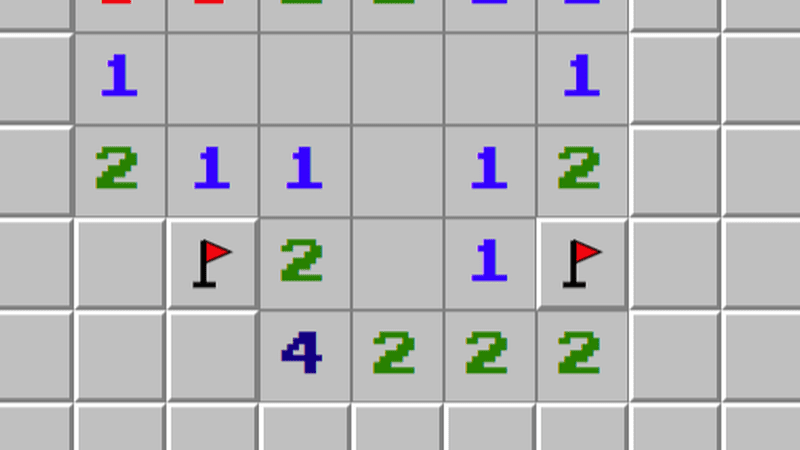Ultimate Tic Tac Toe
Win small boards to claim the grid.
How to Play Ultimate Tic-Tac-Toe
Welcome to Ultimate Tic-Tac-Toe! This ingenious twist on the classic game transforms the simple 3x3 grid into a mind-bending strategic challenge. Prepare for a game that's easy to learn but incredibly deep and rewarding to master.
Basic Rules
- The Setup: The game board consists of a large 3x3 grid, where each cell contains a smaller 3x3 Tic-Tac-Toe board (9 small boards total).
- The Goal: Win the large grid by getting three small boards in a row, column, or diagonal - just like regular Tic-Tac-Toe!
- Making Moves: Players take turns placing their mark (X or O) in an empty cell of any small board.
- The Key Rule: The position where you place your mark determines which small board your opponent must play in next. For example, if you play in the top-right cell of any small board, your opponent must play somewhere in the top-right small board of the main grid.
- Free Choice: If the target small board is already won or completely filled, the next player can choose to play in any available small board.
- Winning Small Boards: Win a small board by getting three marks in a row (horizontally, vertically, or diagonally) within that board.
- Won Boards: Once won, a small board is marked with a large X or O overlay and no more moves can be made in it.
Tips for Beginners
- Think Two Levels: Always consider both the immediate small board you're playing in AND which small board you're sending your opponent to.
- Control the Flow: Try to send your opponent to boards where they have limited good options or where you already have an advantage.
- Don't Ignore Small Boards: While focusing on the big picture is important, don't forget to actually win the small boards you're playing in.
- Strategic Sacrifices: Sometimes it's worth losing a small board if it sends your opponent to a board where you can gain a bigger advantage.
- Watch for Patterns: Look for opportunities to create threats on multiple small boards simultaneously.
- Free Choice is Powerful: When you get to choose any board (because the target is won/full), use this opportunity wisely to gain strategic advantage.
Advanced Strategies
- Board Priority: Some small boards are more valuable than others. Corner and center boards in the main grid are often more strategically important.
- Forcing Sequences: Try to create sequences where you can force your opponent into increasingly bad positions by controlling which boards they must play in.
- Tempo Control: Learn to recognize when to push for immediate wins versus when to build long-term positional advantages.
- Multi-Board Threats: Advanced players create situations where they threaten to win multiple small boards, forcing opponents into impossible defensive positions.
- Endgame Planning: As the game progresses, focus more on the main grid pattern and less on individual small board optimization.
- Defensive Awareness: Always check if your opponent is close to winning the main grid. Sometimes you need to abandon your plan to prevent an immediate loss.
Controls & Accessibility
- Click to Play: Simply click (or tap on mobile) any empty cell in the highlighted active small board(s).
- Visual Indicators: Active boards are highlighted with animated borders. Won boards show large X/O overlays.
- Turn Display: The game clearly shows whose turn it is and provides feedback for invalid moves.
- Game Modes: Choose between playing against AI or in two-player mode for local multiplayer.
- Responsive Design: The game scales beautifully across all device sizes, from phones to large desktop monitors.
- Game Persistence: Your progress is automatically saved, so you can continue games after closing the browser.
Benefits of Playing Ultimate Tic-Tac-Toe
Ultimate Tic-Tac-Toe offers exceptional cognitive benefits that go far beyond traditional puzzle games:
- Multi-Level Thinking: Develop the ability to think simultaneously on multiple levels - individual moves, small board strategy, and overall game position.
- Strategic Planning: Learn to balance short-term tactics with long-term strategic goals.
- Consequence Analysis: Every move has immediate and future implications. Practice evaluating complex cause-and-effect relationships.
- Pattern Recognition: Improve your ability to spot winning patterns and threats across multiple interconnected systems.
- Adaptability: Learn to adjust strategies dynamically as the game state changes and new opportunities emerge.
- Spatial Reasoning: Enhance visualization skills by tracking relationships between multiple game boards simultaneously.
- Decision Making Under Constraints: Practice making optimal choices when your options are limited by game rules.
The Evolution of Tic-Tac-Toe
While traditional Tic-Tac-Toe is a "solved" game (perfect play always results in a draw), Ultimate Tic-Tac-Toe represents a brilliant evolution that restores genuine strategic depth. Created by mathematician Ben Orlin, this variant transforms a simple children's game into a complex strategic battle that challenges even experienced players.
The genius of Ultimate Tic-Tac-Toe lies in its elegant rule addition: your move determines your opponent's next board. This simple constraint creates an intricate web of strategic considerations. Players must constantly balance immediate tactical opportunities with long-term positional advantages, making every move meaningful and consequential.
The game has gained popularity in mathematical and gaming communities precisely because it demonstrates how small rule changes can dramatically increase complexity and strategic depth. It's become a favorite among strategy game enthusiasts, educators, and anyone who appreciates elegant game design.
Frequently Asked Questions
What happens if I'm sent to a board that's already won or full?
You get to choose any available small board to play in! This "free choice" is often a significant strategic advantage, so use it wisely.
Can a small board end in a draw?
Yes! If a small board fills up without anyone getting three in a row, it's considered a draw and marked as such. Drawn boards cannot be won by either player.
How long does a typical game take?
Games usually last 10-20 minutes, depending on the skill level of players and how much time they spend thinking about moves.
Is there a way to guarantee a win?
No! Unlike regular Tic-Tac-Toe, Ultimate Tic-Tac-Toe is not a solved game. Both players have genuine winning chances with good play, making every game exciting and unpredictable.
Should I focus more on winning small boards or controlling where my opponent plays?
Both are important! The key is learning to balance immediate opportunities (winning small boards) with strategic positioning (controlling the flow of play). This balance is what makes the game so engaging and challenging.






